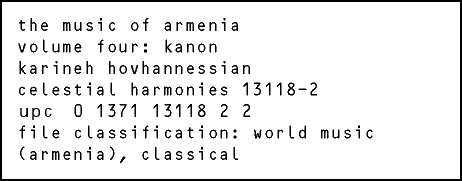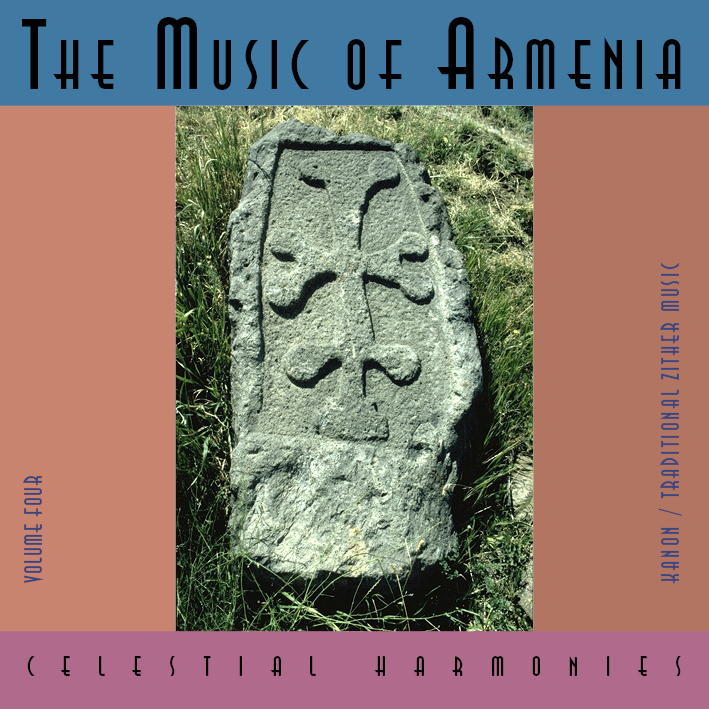

the project
Like the preceeding collection, The Music of
Armenia, Volume Three: Duduk (13117),
this volume features both an instrument and a collection
of works that occupy a middle ground between folk and classical
music. Like the duduk reed instrument, the kanon's
place in Armenian music is broadly defined. Traditionally used
by folk singers to accompany their song, now, the kanon
is taught in the music conservatories of Armenia with the same
rigor and care as the violin or piano. Its repertoire includes
ancient epic songs, folk dances, arrangement of sacred chants,
and composed works that reflect the Western or Arabic classical
traditions. It seems like the instrument was first used as accompaniment
to minstrel songs or to the recitation of epic poetry; but the
versatility of the modern instrument enabled some of the more
curious and virtuosic kanon players of the 20th century
to draw freely from the full range of Armenian music.
Many of the pieces recorded here by Karineh Hovhannessian
are simply instrumental transcriptions of what were originally
vocal works. Some of them are from the ashugh tradition,
referring to the troubadour poet–musicians who wandered
through Armenia from the 17th century through the 19th.
The following tracks offer a sampling of Karineh
Hovhannessian's diversity with the kanon: Eshkhemed
(track 11) has a bittersweet quality reminiscent of some Irish
or medieval European troubadour music. Tokat (track 15),
a surprising arrangement for solo kanon by Karineh Hovhannessian
is a swirling harp–like fantasy that brings to mind the
watery Impressionism of Debussy. Otar-amai champeki vra
(track 16) is a moody musical landscape for kanon and
duduk drones.
the artists







